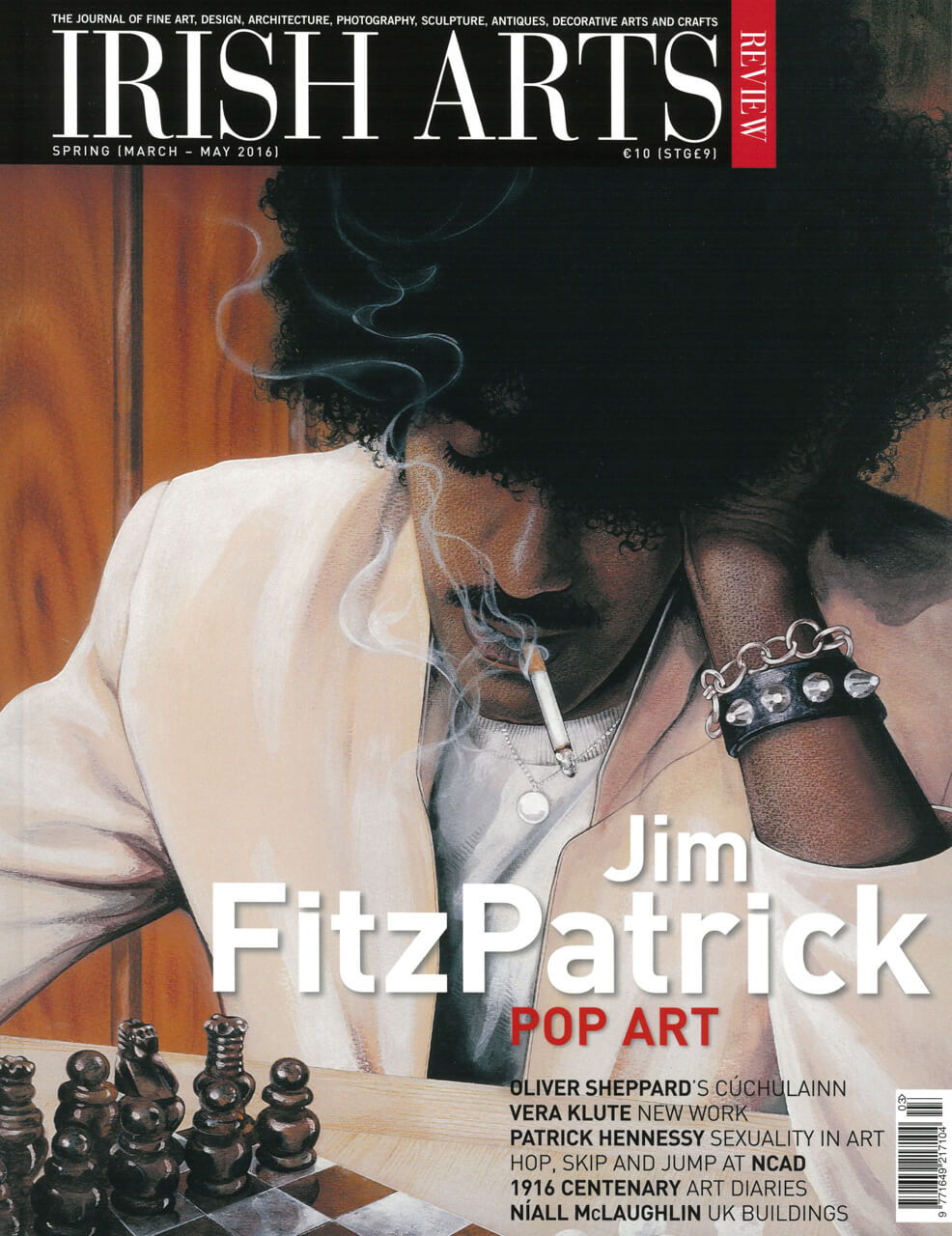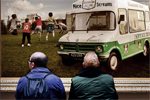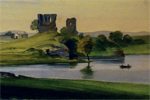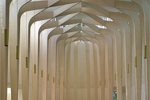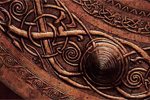
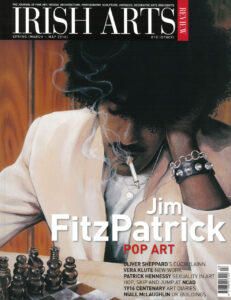
Proving that good design is timeless, Virginia Teehan presents a selection of rare artefacts travelling to Boston College, celebrating Irish design from the Arts and Crafts Movement.
Drawing from national and private collections in Ireland, Northern Ireland and the US the exhibition includes works usually unavailable for public viewing. It is a collaboration, led by University College Cork and in the US by the McMullen Museum, Boston College that celebrates a partnership between the US and Ireland. Lenders include, The National Library of Ireland; The National Museum of Ireland; The National Museum of Northern Ireland; The National College of Art and Design; The Royal College of Physicians; The Royal Irish Academy; St Brendan’s Cathedral, Loughrea, Co Galway; The Abbey Theatre; the Crawford Art Gallery Cork; The Trustees of the Honan Collection, University College, Cork. US lenders include, Burns Library, Boston College; The Coring Museum of Glass and private collectors.
The exhibition is the first comprehensive examination of the Irish Arts and Crafts movement in the US and explores the movement within the contexts of nationalism, feminism, the Irish Revival and modernism. It analyses the creative interplay of innovation and tradition in artworks, created at a time of a shifting national mood. The exhibition references the people, many of whom were women, who shaped the definition of the Revival movement. By analysing applied artistic design and innovation during the first decades of the 20th century, this event explores what constituted good design, specifically, Irish design.
The exhibition’s centrepiece introduces stunning early medieval influenced textiles, metal work, vestments, book bindings and altar cards from the Honan Chapel, University College Cork. Consecrated in November 1916, the Honan Chapel and collection is one of the finest representations of the Irish Revival. Known internationally for its collection of Harry Clarke windows, the Chapel’s collection of sacred art includes the work of the finest Irish designers, artists and craftspeople providing a unique record of their creativity and skill.
Introducing international audiences to these artworks opens the door to the world of other talented, largely unknown Irish designers, artists and makers, too many to mention in this short essay. Phoebe Anna Traquair (1852-1936), a Dublin native, examples of whose delicately designed enamel jewellery as well as a book binding feature in this exhibition. Her work is rarely, if ever, exhibited in an Irish context despite her extraordinary skills (Fig 1&5). Well known to Scottish audiences, Traquair’s work can be seen at the National Museums of Scotland and elsewhere in Scotland. The National Museum Northern Ireland lent, amongst a number of items, a stained glass light box in jewel colours, the work of Belfast-born Wilhelmina Geddes (1887-1955) entitled The Fate of the Children of Lire. Rarely seen samples of Fivemiletown Art Metalworkers, Co Fermanagh are exhibited, as are the jewellery and leather work designed by Eva McKee, and the illustrations by John Campbell (1883-1962) are amongst the work of many other practitioners from Ulster. A highly decorative, circular copper framed mirror from the Abbey Theatre is on view, the work of the Youghal Art Metal Workers (Fig 6). Cork’s role is well represented with the James Archer (1871-1946) casket from the Crawford Art Gallery (Fig 7). Four banners from St Brendan’s Cathedral, Loughrea, Co. Galway, two designed by Jack Yeats (1871-1957), one designed by Mary Cottenham Yeats (1867-1947) and one designed by George Russell (AE) (1867-1935) all made by the Dun Emer guild are exhibited. Another Dun Emer banner, romantically designed by Ethel Rhind (1879-1952) entitled Smuainteach from the National Museum of Ireland is included. A privately owned self-portrait of Dun Emer founder Evelyn Gleeson (1855-1944) evokes an intimate connection with the designer as does her hand loom.
Introducing international audiences to these artworks opens the door to the world of other talented, largely unknown Irish designers, artists and makers
The Burns Library at Boston College has mounted an exhibition entitled, Recreating Identity: The Arts and Crafts Movement in Ireland, which complements the McMullen Museum exhibition (Fig 2). Drawing upon the Burns’ rich collections of Irish materials the exhibition showcases examples of handpress printing, bookbinding, textile design and needlework and other applied arts. Included in the exhibition are examples of binding and printing from the Cuala and Dun Emer presses and a number of works by WB Yeats. The exhibition also features examples by William Morris and other printers and designers from the English Arts and Crafts tradition, which makes for an interesting comparison. A wooden printing block used to hand print material for Joshua Clarke’s Studio is interesting as are the beautifully worked promotional materials for Joshua’s son Harry Clarke also included in this show. The Burns exhibition is not confined to printed items and includes: a set of Irish Decorative Arts Association playing cards produced by W & G Baird, Belfast; a late 19th-century Belleek tea service and a lace 19th-century dress cuff decorated with shamrocks and flowers.
In 1916, the year that marked the opening of the Honan Chapel, Irishmen were fighting for national freedom at home and some were joining with the troops fighting on the battlefields of Europe. In this violent era, principled men and women advocated for a ‘new’ Ireland, as they sought writers, artists and activists to develop a different cultural language to express the new nation. ‘The Arts and Crafts Movement: Making it Irish’ aims to articulate that language with contemporary accents.
‘The Arts and Crafts Movement’ Making it Irish’ The McMullen Museum of Art and The Burns Library, Boston College until 5 June 2016.
Acknowledgments
Colman Ó Clabhaigh, OSB., Burns visiting Scholar, Boston College
Virginia Teehan is Director of Cultural Projects, University College Cork.
